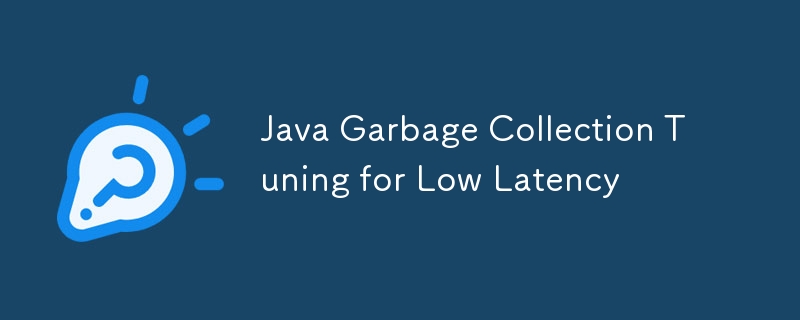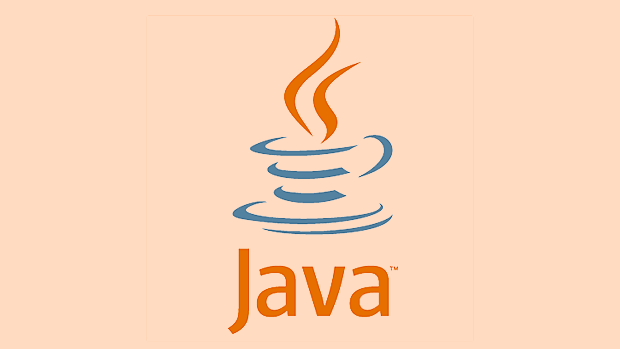The core of Java garbage collection tuning in low-latency scenarios is to reduce GC pause time and avoid frequent Full GC. 1. Choose a suitable garbage collector, such as ZGC (JDK 11) or Shenandoah (JDK 8u255 /JDK 15), suitable for low-latency scenarios; G1 is suitable for medium-sized systems; older versions of JDK are not suitable for response-sensitive services. 2. Reasonably set the ratio of heap memory and the new generation, keep the initial heap consistent with the largest heap, and appropriately increase the space of the new generation. The proportion of the old generation is recommended to be 3:7, such as -Xms4g -Xmx4g -Xmn1g. 3. Control the life cycle of the object, reduce temporary object creation, and optimize code through object pooling, ThreadLocal, and avoid creating objects in loops. 4. Monitor and analyze GC logs, enable parameters such as -XX: PrintGCDetails, and use tools such as jstat, GCViewer, Prometheus Grafana to assist in analysis and tuning.

The core of Java garbage collection tuning in low-latency scenarios is to reduce GC pause time and avoid frequent triggering of Full GC. The key points are to choose the right garbage collector, set the heap memory size reasonably, and control the object life cycle.

Choose a garbage collector that is suitable for low latency
Different versions of Java support different GC strategies, but if you are pursuing low latency, ZGC or Shenandoah is the first choice. They are all concurrent marking collation algorithms that can complete most of GC work in milliseconds without causing obvious pauses.
- ZGC (JDK 11) : Suitable for applications with heap memory from several hundred MB to TB, with a pause time usually within 10ms.
- Shenandoah (JDK 8u255, JDK 15) : It also focuses on low latency and is suitable for medium and large heap memory applications.
- G1 (Garbage First) : Although it is not as low latency as the previous two, it performs stably and has a more mature configuration in most medium-sized systems.
If you are using an old version of JDK, such as JDK 8, the default is the Parallel Scavenge Serial Old combination. This combination has high throughput but high latency and is not suitable for services that are sensitive to response time.

Reasonably set the heap memory and the new generation ratio
The larger the heap memory, the better, especially in low-latency scenarios. Too large will cause the GC to be longer, especially when Full GC occurs, where the pause time may soar.
Recommended practices:

- Set the initial heap (-Xms) and the maximum heap (-Xmx) to the same value to avoid performance fluctuations caused by dynamic capacity expansion during runtime.
- Appropriately increase the Ceponymous (-Xmn) so that short-lived objects can be recycled in the Eden area, reducing the number of objects promoted to the elderly.
- The proportion of the elderly is recommended to remain at around 3:7 , which means that the new generation accounts for about 30% of the entire heap, which can be adjusted according to the actual object life cycle.
For example: If your JVM total heap is set to 4G, you can consider -Xms4g -Xmx4g -Xmn1g , so that the Eden area can have about 600MB~800MB, which is enough to deal with most short-term objects.
Controls the frequency and life cycle of object creation
Many low-latency problems are actually not a problem with GC itself, but rather that programs frequently create temporary objects, resulting in frequent triggering of GC. This problem needs to be optimized from the code level.
Common practices include:
- Try to reuse objects, such as using object pools or ThreadLocal caches.
- Reduce unnecessary packing and unboxing operations to avoid temporary objects generated by automatic packing.
- Use WeakHashMap to manage cached data to avoid long-term memory occupancy.
- Avoid frequent creation of objects in the loop body.
For example, splicing the string log.info("user=" user) in the log output will generate a new String object every time, and replacing it with log.info("user={}", user) can effectively reduce GC pressure.
Monitoring and analyzing GC logs are the basis for tuning
Blindly tuning without reading the GC log is basically equivalent to guessing blindly. It is recommended to turn on the following parameters to record GC:
-XX: PrintGCDetails -XX: PrintGCDateStamps -Xloggc:/path/to/gc.log
Some tools can also be used to assist in analysis, such as:
- jstat : View GC statistics in real time.
- GCViewer or GCEasy : Visualize analysis of log files.
- Prometheus Grafana : Used with JVM Exporter to implement monitoring alarms.
Through these methods, you can clearly see the time, frequency, and object allocation rate of each GC, thereby adjusting the parameters in a targeted manner.
Basically all this is it. Low-latency tuning is not something that can be achieved overnight. It requires comprehensive judgment based on business characteristics, GC behavior and code behavior.
The above is the detailed content of Java Garbage Collection Tuning for Low Latency. For more information, please follow other related articles on the PHP Chinese website!

Hot AI Tools

Undress AI Tool
Undress images for free

Undresser.AI Undress
AI-powered app for creating realistic nude photos

AI Clothes Remover
Online AI tool for removing clothes from photos.

Clothoff.io
AI clothes remover

Video Face Swap
Swap faces in any video effortlessly with our completely free AI face swap tool!

Hot Article

Hot Tools

Notepad++7.3.1
Easy-to-use and free code editor

SublimeText3 Chinese version
Chinese version, very easy to use

Zend Studio 13.0.1
Powerful PHP integrated development environment

Dreamweaver CS6
Visual web development tools

SublimeText3 Mac version
God-level code editing software (SublimeText3)

Hot Topics
 How to iterate over a Map in Java?
Jul 13, 2025 am 02:54 AM
How to iterate over a Map in Java?
Jul 13, 2025 am 02:54 AM
There are three common methods to traverse Map in Java: 1. Use entrySet to obtain keys and values at the same time, which is suitable for most scenarios; 2. Use keySet or values to traverse keys or values respectively; 3. Use Java8's forEach to simplify the code structure. entrySet returns a Set set containing all key-value pairs, and each loop gets the Map.Entry object, suitable for frequent access to keys and values; if only keys or values are required, you can call keySet() or values() respectively, or you can get the value through map.get(key) when traversing the keys; Java 8 can use forEach((key,value)->
 Comparable vs Comparator in Java
Jul 13, 2025 am 02:31 AM
Comparable vs Comparator in Java
Jul 13, 2025 am 02:31 AM
In Java, Comparable is used to define default sorting rules internally, and Comparator is used to define multiple sorting logic externally. 1.Comparable is an interface implemented by the class itself. It defines the natural order by rewriting the compareTo() method. It is suitable for classes with fixed and most commonly used sorting methods, such as String or Integer. 2. Comparator is an externally defined functional interface, implemented through the compare() method, suitable for situations where multiple sorting methods are required for the same class, the class source code cannot be modified, or the sorting logic is often changed. The difference between the two is that Comparable can only define a sorting logic and needs to modify the class itself, while Compar
 How to handle character encoding issues in Java?
Jul 13, 2025 am 02:46 AM
How to handle character encoding issues in Java?
Jul 13, 2025 am 02:46 AM
To deal with character encoding problems in Java, the key is to clearly specify the encoding used at each step. 1. Always specify encoding when reading and writing text, use InputStreamReader and OutputStreamWriter and pass in an explicit character set to avoid relying on system default encoding. 2. Make sure both ends are consistent when processing strings on the network boundary, set the correct Content-Type header and explicitly specify the encoding with the library. 3. Use String.getBytes() and newString(byte[]) with caution, and always manually specify StandardCharsets.UTF_8 to avoid data corruption caused by platform differences. In short, by
 JavaScript Data Types: Primitive vs Reference
Jul 13, 2025 am 02:43 AM
JavaScript Data Types: Primitive vs Reference
Jul 13, 2025 am 02:43 AM
JavaScript data types are divided into primitive types and reference types. Primitive types include string, number, boolean, null, undefined, and symbol. The values are immutable and copies are copied when assigning values, so they do not affect each other; reference types such as objects, arrays and functions store memory addresses, and variables pointing to the same object will affect each other. Typeof and instanceof can be used to determine types, but pay attention to the historical issues of typeofnull. Understanding these two types of differences can help write more stable and reliable code.
 What is the 'static' keyword in Java?
Jul 13, 2025 am 02:51 AM
What is the 'static' keyword in Java?
Jul 13, 2025 am 02:51 AM
InJava,thestatickeywordmeansamemberbelongstotheclassitself,nottoinstances.Staticvariablesaresharedacrossallinstancesandaccessedwithoutobjectcreation,usefulforglobaltrackingorconstants.Staticmethodsoperateattheclasslevel,cannotaccessnon-staticmembers,
 Using std::chrono in C
Jul 15, 2025 am 01:30 AM
Using std::chrono in C
Jul 15, 2025 am 01:30 AM
std::chrono is used in C to process time, including obtaining the current time, measuring execution time, operation time point and duration, and formatting analysis time. 1. Use std::chrono::system_clock::now() to obtain the current time, which can be converted into a readable string, but the system clock may not be monotonous; 2. Use std::chrono::steady_clock to measure the execution time to ensure monotony, and convert it into milliseconds, seconds and other units through duration_cast; 3. Time point (time_point) and duration (duration) can be interoperable, but attention should be paid to unit compatibility and clock epoch (epoch)
 How does a HashMap work internally in Java?
Jul 15, 2025 am 03:10 AM
How does a HashMap work internally in Java?
Jul 15, 2025 am 03:10 AM
HashMap implements key-value pair storage through hash tables in Java, and its core lies in quickly positioning data locations. 1. First use the hashCode() method of the key to generate a hash value and convert it into an array index through bit operations; 2. Different objects may generate the same hash value, resulting in conflicts. At this time, the node is mounted in the form of a linked list. After JDK8, the linked list is too long (default length 8) and it will be converted to a red and black tree to improve efficiency; 3. When using a custom class as a key, the equals() and hashCode() methods must be rewritten; 4. HashMap dynamically expands capacity. When the number of elements exceeds the capacity and multiplies by the load factor (default 0.75), expand and rehash; 5. HashMap is not thread-safe, and Concu should be used in multithreaded
 What is a ReentrantLock in Java?
Jul 13, 2025 am 02:14 AM
What is a ReentrantLock in Java?
Jul 13, 2025 am 02:14 AM
ReentrantLock provides more flexible thread control in Java than synchronized. 1. It supports non-blocking acquisition locks (tryLock()), lock acquisition with timeout (tryLock(longtimeout, TimeUnitunit)) and interruptible wait locks; 2. Allows fair locks to avoid thread hunger; 3. Supports multiple condition variables to achieve a more refined wait/notification mechanism; 4. Need to manually release the lock, unlock() must be called in finally blocks to avoid resource leakage; 5. It is suitable for scenarios that require advanced synchronization control, such as custom synchronization tools or complex concurrent structures, but synchro is still recommended for simple mutual exclusion requirements.






